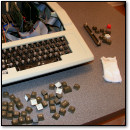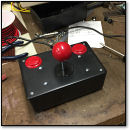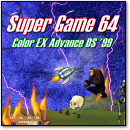[ Retro Scan of the Week ] Apple II Mountain Music
Monday, May 21st, 2012 The Mountain Computer MusicSystem. Not a scene from Hee Haw.
The Mountain Computer MusicSystem. Not a scene from Hee Haw.
In an age when the vast majority of commercial music is recorded or produced using computers, it’s interesting to look back to a time with computer-based music tools were in their infancy. In this case we’re turning back the clock 30 years to examine an ad for the Mountain Computer MusicSystem, a musical synthesizer and sequencer add-on for the Apple II (horse not included).
Admittedly, I know nothing about this system beyond what you read in the ad above (and some Googled info found here and here). But I wouldn’t be surprised if the original creators of the MusicSystem are lurking somewhere out there on the Internet — just waiting for this subject to come up so they can post a comment about it on a blog like this one. If that’s the case, please do!
Discussion Topic of the Week: When was the first time you used a computer as a tool in music production?














